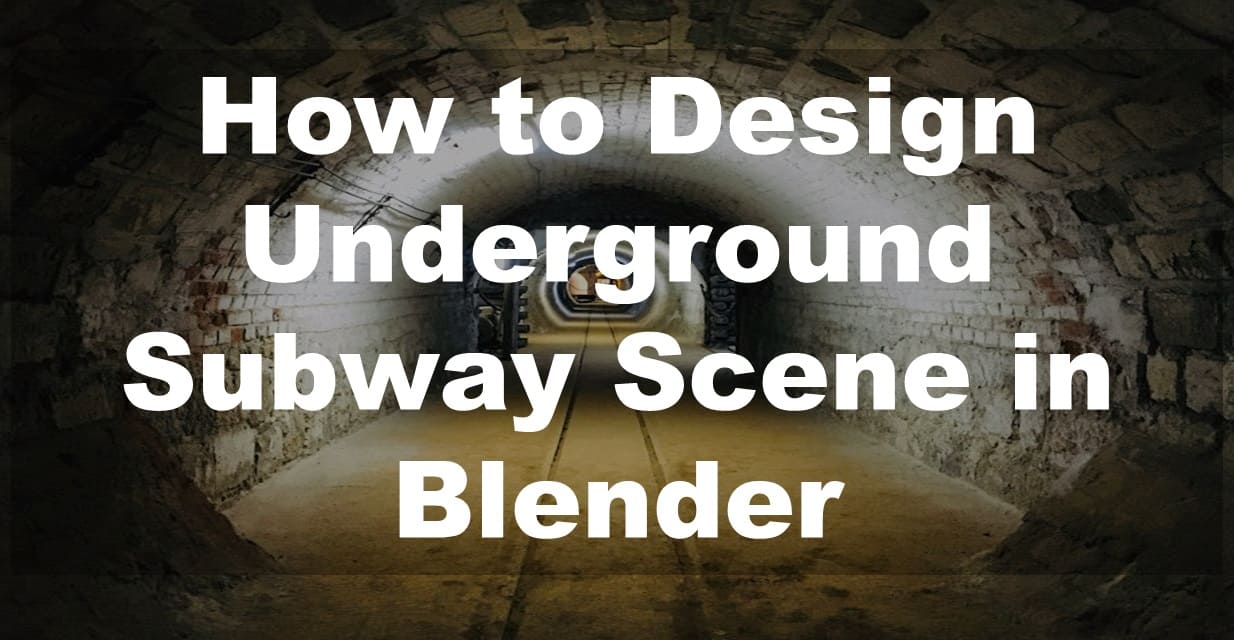
Designing an underground subway scene in Blender offers a captivating opportunity to delve into the intricacies of urban infrastructure. From dimly lit platforms to bustling train tracks, crafting a realistic subway environment requires meticulous attention to detail and a comprehensive understanding of Blender's capabilities. In this guide, we'll take you through the step-by-step process of creating a dynamic underground subway scene in Blender, ensuring realism and immersion every step of the way.
Gathering Before diving into the design process, it's essential to conduct thorough research and gather reference materials. Study photographs, videos, and blueprints of real subway stations to understand the architectural elements, lighting conditions, and spatial layout. Pay close attention to details such as signage, platform materials, and structural features, as these will contribute to the authenticity of your scene.
Start by launching Blender and creating a new project. Adjust the viewport settings to accommodate the scale of your subway scene. Consider setting the scene at night or during off-peak hours to capture the unique atmosphere of an underground environment. Add a ground plane to serve as the foundation for your subway station and position the camera to provide an optimal viewing angle.
Also Read - How to Design A Christmas Tree in Blender?
Begin by modeling the basic structural elements of the subway station, such as walls, columns, and platforms. Pay attention to proportions and scale, ensuring that the environment closely resembles real-world subway stations. Use Blender's array and mirror modifiers to efficiently replicate symmetrical elements such as pillars and track segments.
Next, add detailed elements such as turnstiles, benches, ticket machines, and trash cans to populate the scene and enhance realism. Consider incorporating architectural features unique to your chosen subway system, such as distinctive signage or artwork.
Tracks and Trains Model the train tracks running through the subway station, taking care to align them accurately with the platform edges. Use Blender's array and curve modifiers to create smooth, curved tracks that mimic the natural curvature of subway tunnels. Add railings, catwalks, and other infrastructure along the tracks to enhance authenticity.
Model the subway trains using reference images or blueprints as a guide. Pay attention to details such as doors, windows, and headlights, and ensure that the trains are scaled appropriately to fit the tracks. Experiment with materials and textures to achieve a realistic metallic finish for the train bodies, and add interior details such as seating and handrails for added realism.
Lighting plays a crucial role in setting the mood and atmosphere of your subway scene. Experiment with different lighting setups to achieve the desired effect, whether it's the harsh fluorescent lighting of the platform or the warm glow of ambient light filtering through tunnel entrances.
Consider adding volumetric lighting effects to simulate dust particles or steam, adding depth and realism to the scene. Use Blender's compositing tools to adjust brightness, contrast, and color grading to further enhance the atmosphere and mood of the scene.
Also Read - How to Design Spaceship in Blender
Apply textures to the various elements of your subway scene to add depth and realism. Use high-resolution texture maps to add surface detail to walls, floors, and other architectural elements. Pay attention to weathering and wear patterns, especially in high-traffic areas such as platforms and stairs.
Add decals and signage to convey important information such as station names, directions, and safety instructions. Use Blender's UV mapping tools to ensure that textures are applied accurately and seamlessly across surfaces.
Once you're satisfied with the modeling, lighting, and texturing of your subway scene, it's time to render the final image or animation. Configure Blender's render settings to achieve the desired resolution and quality, and experiment with different render engines and settings to find the optimal balance between realism and performance.
After rendering, use Blender's compositing and post-processing tools to fine-tune the final image or animation. Add depth of field effects to focus attention on specific elements of the scene, and adjust exposure and color grading to enhance the overall mood and atmosphere.
Also Read - How to Design Spaceship Corridor in Blender?
Designing an underground subway scene in Blender is a rewarding creative endeavor that allows you to explore the complexities of urban infrastructure and architectural design. By following the step-by-step process outlined in this guide, you can create a dynamic and immersive subway environment that captures the hustle and bustle of city life. So fire up Blender, unleash your creativity, and embark on a journey to the depths of urban exploration.
Comments